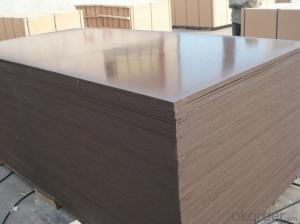When you think of plywood, you might imagine the standard 3/4 inch thickness that’s commonly used in a variety of applications. But did you know that the actual thickness of 3/4 plywood can vary? Let’s dive into the nuances of this versatile material and explore why these variations exist, how they affect its performance, and what you should consider when choosing the right plywood for your project.
The Mystery of Plywood Thickness
Plywood is an engineered wood product made from thin layers of wood veneer, or plies, that are glued together under heat and pressure. The 3/4 inch thickness is a popular choice for many reasons, including its strength, workability, and affordability. However, the term ‘3/4 inch’ is somewhat misleading. In reality, the actual thickness of 3/4 plywood can range from 18 to 23 millimeters, which is slightly less than the nominal 19.05 millimeters. This discrepancy is due to manufacturing tolerances and the fact that plywood is often measured before it dries and is sanded to its final thickness.
The Role of Tolerances
Manufacturing tolerances are the allowable differences in dimensions between what is specified and what is actually produced. In the case of plywood, these tolerances account for the natural variations in wood and the process of gluing and pressing the plies together. The American Plywood Association (APA) sets the standard tolerances for plywood thickness, which can help explain the variations you might encounter.
The Impact of Moisture Content
Another factor that influences the actual thickness of plywood is its moisture content. Freshly manufactured plywood contains more moisture than plywood that has been dried and seasoned. As the plywood dries, it can shrink, leading to a reduction in thickness. This is why it’s important to consider the moisture content when comparing different sheets of plywood.
The Real-World Implications
Understanding the variations in plywood thickness is crucial for a variety of reasons. For one, it affects the structural integrity of your project. If you’re building a cabinet or a piece of furniture, you want to ensure that the plywood is thick enough to support the weight and withstand the stresses it will be subjected to.
The Importance of Consistency
Consistency in thickness is also important for aesthetic reasons. If you’re working on a project where the plywood will be visible, you want to make sure that the sheets you’re using are uniform in thickness to avoid any unsightly gaps or uneven surfaces.
The DIY Perspective
For the do-it-yourself enthusiast, knowing the actual thickness of your plywood can save you time and frustration. It can help you make more accurate cuts and ensure a better fit for your project components. This can be particularly important when you’re working with tight spaces or when precision is key.
Choosing the Right Plywood for Your Project
When selecting plywood for your project, there are several factors to consider beyond just the nominal thickness. Here are some key points to keep in mind:
Grade and Quality
The grade of the plywood refers to the quality of the wood veneer and the absence of defects. Higher grades of plywood will have fewer knots, repairs, and other imperfections, which can affect both the appearance and the structural integrity of your project.
Type of Plywood
There are different types of plywood, such as hardwood plywood, softwood plywood, and marine plywood, each with its own set of characteristics and ideal applications. Make sure to choose the type that best suits your needs.
Environmental Factors
Consider the environment in which your project will be used. If it will be exposed to moisture, you’ll want to choose a plywood that is resistant to water damage, such as marine-grade plywood. If it will be used in high-traffic areas, you might want to opt for a more durable plywood.
Price vs. Performance
While it’s tempting to go for the cheapest option, consider the performance of the plywood in relation to its price. Sometimes, investing in a higher-quality plywood can save you money in the long run by reducing the need for repairs or replacements.
The Art of Plywood: A Personal Touch
Plywood is more than just a material; it’s a canvas for your creativity. Whether you’re a professional woodworker or a weekend warrior, the right plywood can make all the difference in your project’s success. By understanding the variations in thickness and considering the factors that affect its performance, you can make more informed decisions and create something truly special.
A Note of Caution
While it’s important to be aware of the variations in plywood thickness, don’t let them dictate your entire project. Use them as a guide, but also trust your instincts and experience. After all, sometimes the best projects are the ones that push the boundaries of what’s expected.
In conclusion, the actual thickness of 3/4 plywood is not as straightforward as it may seem. By understanding the factors that contribute to these variations and considering the specific needs of your project, you can select the right plywood and create something that is both functional and beautiful. So the next time you’re at the lumberyard, take a closer look at those sheets of plywood. You might just find the perfect one for your next masterpiece.

